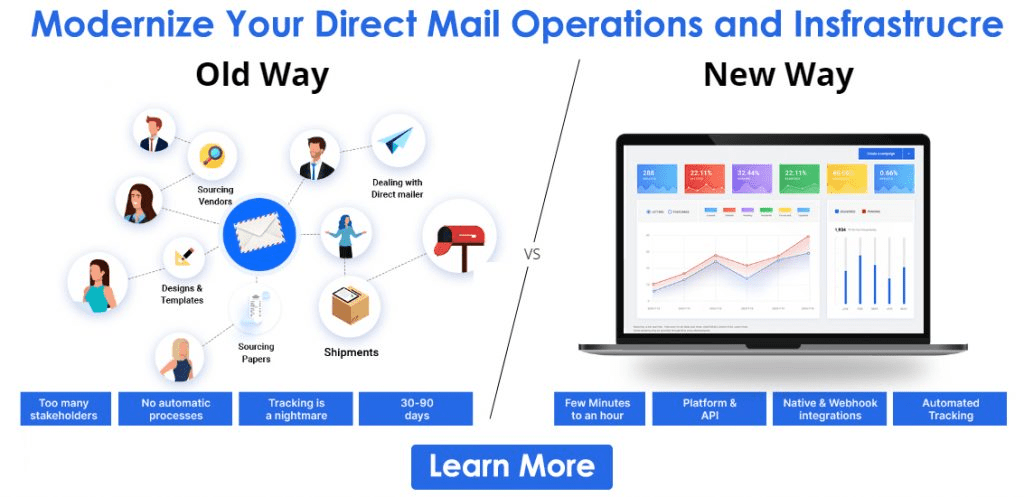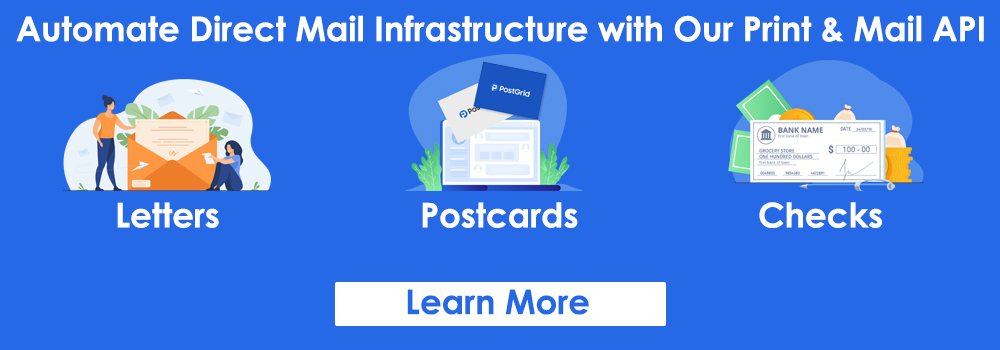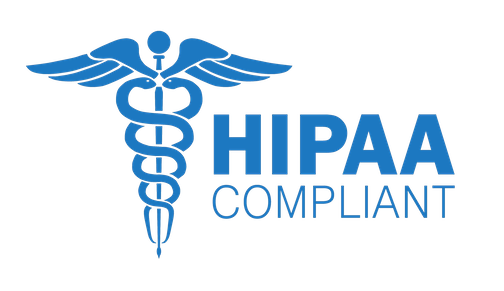
13 Successful Marketing Strategies for Automotive Industry to Boost Sales
In the rapidly evolving world of automotive marketing, staying ahead of the curve is crucial for success. With the digital landscape continuously changing, drafting strategies have become more significant than ever.
This comprehensive guide delves into the latest trends and effective tactics that form the backbone of a successful automotive marketing strategy. We’ll explore many topics designed to enhance your marketing efforts, from leveraging digital platforms to understanding the power of customer reviews.

Whether you’re new to the automotive industry or looking to refine your approach, this guide offers valuable insights into driving more sales and engaging customers in meaningful ways.
Digital Marketing Transformation in Automotive Businesses
The past years have seen significant digital advances in the sector. Let us discuss them below:
The Shift from Traditional to Digital Platforms
The automotive marketing landscape has undergone a significant transformation. It has moved from traditional methods like print ads and billboards to digital platforms.
This shift reflects the changing ways consumers seek information and make purchasing decisions. Today, digital platforms offer dynamic ways to showcase vehicles, feature reviews, and directly engage with potential buyers.
Automotive marketers can embrace digital channels to reach a wider audience, tailor their messaging, and track the effectiveness of their campaigns with precision.
Importance of a Digital Presence for Automotive Dealerships
A robust digital presence is no longer optional for automotive dealerships; it’s essential. A dealership’s online visibility directly influences its ability to attract and retain customers. Websites, social media profiles, and online reviews are the first contact points for potential buyers. These digital touchpoints for marketing in automotive businesses allow dealerships to display their inventory, highlight special offers, and establish trust with consumers.
In an era where consumers expect convenience and immediate access to information, a reputed digital presence ensures that automotive dealerships remain competitive and relevant.
 Also Read: Letterbox Marketing
Also Read: Letterbox MarketingLeveraging Customer Reviews and Testimonials for Automotive Marketing Strategies
You can benefit a lot by gathering and posting customer feedback online. Here is how you can go about it:
Strategies for Collecting and Showcasing Customer Reviews
Customer reviews and testimonials play a pivotal role when marketing for the automotive industry. Dealerships should actively encourage satisfied customers to share their experiences online to effectively gather this valuable feedback, whether through follow-up emails, text messages, or during the sale closure.
Offering incentives, such as discounts on future services, can also motivate customers to leave reviews. Once collected, showcasing these reviews prominently on your website, social media, and advertising materials amplifies positive perceptions and draws in potential buyers.
Highlighting real customer stories adds authenticity and relatability to your marketing efforts.
Impact of Reviews on Consumer Trust and Decision-Making
Customer reviews significantly influence consumer trust and decision-making in the automotive marketing industry. A survey reveals that 76% of consumers read online reviews for local businesses, with the automotive sector being a key area of interest.
Positive reviews as marketing strategies for the automotive industry build credibility and reassure potential buyers of the vehicles’ quality and reliability, and the customer service at a dealership.
Conversely, negative reviews provide valuable feedback for improvement and an opportunity to demonstrate excellent customer service by addressing concerns publicly. Ultimately, a broad collection of positive reviews can tip the scales in favour of a dealership, significantly impacting consumer choices in a competitive market.
Search Engine Optimization (SEO) for Automotive Companies or Dealerships
In today’s digital age, Search Engine Optimization (SEO) is crucial for any automotive marketing strategy. Effective SEO ensures that your dealership’s website appears at the top of search engine results, making it easier for potential customers to find you.
Here, we’ll explore key strategies and best practices for on-page and off-page SEO tailored for automotive dealerships.
Keyword Strategies for Automotive Marketing
Choosing the right keywords is the foundation of a successful SEO strategy. For automotive dealerships, this means identifying the terms and phrases potential customers use when searching for vehicles online.
Start by researching keywords related to your dealership’s brand, vehicle makes and models you sell, and automotive services you offer. Tools like Google’s Keyword Planner can help boost your automotive marketing strategies by finding high-volume search terms with low competition.
Incorporating local keywords, such as “used cars Los Angeles” or “Ford dealer Miami,” can also drive targeted traffic to your site from people in your area.
On-Page SEO Best Practices
On-page SEO involves optimizing individual web pages to rank higher on the search engine results page. Here are some best practices:
- Title Tags and Meta Descriptions: Ensure each page on your website has a unique title tag and meta description that includes relevant keywords. For example, a page about “2024 Honda Civic” should have those exact words in both the title and description.
- Content Quality: High-quality, informative automotive marketing content that addresses the needs and questions of your audience is essential. Blog posts comparing different models, maintenance tips, or guides on financing options add value and can improve your site’s ranking.
- Image Optimization: Use high-quality images of the vehicles you sell and ensure each image file is named descriptively and includes alt text with relevant keywords.
- Mobile Optimization: With more consumers using Android devices to research their next vehicle purchase, having a mobile-friendly website is crucial.
Off-Page SEO Best Practices
Off-page SEO focuses on activities outside your website to improve your site’s authority and ranking.
- Backlinks: Acquiring links from reputable websites in the automotive marketing industry can significantly boost your site’s credibility. Consider guest blogging, partnering with local businesses, or featuring in automotive news articles.
- Social Media: Active social media profiles can drive traffic to your website and help with SEO. Share your content, engage with followers, and use social platforms to showcase your dealership’s personality and values.
- Online Reviews: Use your auto industry marketing strategy to encourage satisfied customers to leave positive reviews on platforms like Google My Business. Responding to positive and negative reviews shows you value customer feedback and can improve your online reputation.
These SEO automotive marketing ideas can enhance your dealership’s online visibility, attract potential customers, and drive sales. Remember, SEO is a long-term investment, and staying up-to-date with best practices and algorithm changes is vital to maintaining and improving your rankings.
Invest in Effective Paid Advertising
In the fast-paced world of automotive marketing, leveraging paid advertising is essential for dealerships aiming to stand out and attract potential buyers.
Platforms like Google Ads, social media channels, and various PPC campaigns offer powerful tools to reach targeted audiences effectively. Here is how to navigate these options and optimize your ad spend for the best results.
Overview of Google Ads
Google Ads is a premier platform for automotive dealerships to connect with potential customers. Dealerships can capture the attention of high-intent users by placing ads in search results for specific queries related to automotive buying, servicing, or comparisons.
For instance, bidding on keywords like “new SUVs near me” can direct local traffic to your dealership’s website. It boosts your automotive marketing strategies and the likelihood of converting searches into sales. Utilizing Google’s extensive network allows for a broad yet targeted reach, ensuring your ads are seen by those most interested in what you have to offer.
Social Media Ads
Social media platforms for automotive marketing ideas, including Facebook, Instagram, and LinkedIn, provide unique opportunities for automotive marketing. These platforms offer detailed targeting options based on demographics, interests, behaviours, and more, allowing dealerships to tailor their messages to specific audience segments.
A dealership could create a Facebook ad campaign targeting users interested in family vehicles within a 30-mile radius of their location, showcasing the latest models with attractive financing options. Combining the visual nature of social media ads with the ability to engage with users makes them an invaluable tool in your automotive advertising kit.
Other PPC Campaigns
Beyond Google Ads and social media, other PPC (Pay-Per-Click) platforms like Bing Ads or automotive-specific sites offer additional avenues to reach potential customers.
These platforms might have lower traffic volumes but can provide more cost-effective advertising options due to less competition. Tailoring ads to these automotive marketing strategy platforms can capture a niche audience that competitors might overlook.
Tips for Optimizing Ad Spend and Targeting
- Define Your Goals: Identify what you aim to achieve with each campaign, whether it’s increasing brand awareness, generating leads, or driving sales. This clarity will guide your budget allocation and targeting strategy.
- Geo-Targeting: Use geo-targeting under your marketing strategies for the automotive industry to focus your advertising efforts on the areas most likely to convert to in-person dealership visits. It ensures you only spend on potential customers within a practical distance from your location.
- Optimize for Mobile: With significant online activity on mobile devices, ensure your ads and landing pages suit mobile users. It enhances user experience and improves conversion rates.
- A/B Testing: Regularly test different ad formats, copy, and images under your automotive marketing strategy to determine what resonates best with your target audience. Use these insights to refine your campaigns for better performance.
- Monitor and Adjust: Please keep a close eye on your campaign metrics and be ready to adjust your auto industry marketing strategy based on performance data. It might mean reallocating the budget to high-performing ads or revising targeting criteria to improve efficiency.
Automotive dealerships can significantly enhance their visibility and attract more qualified leads by strategically employing Google Ads, social media advertising, and exploring other PPC opportunities. The key to success lies in targeted, well-optimized campaigns that speak directly to the needs and interests of potential buyers.
Social Media Marketing Strategies
Social media has become an indispensable tool for automotive marketing, offering unique opportunities to engage with potential customers and build brand loyalty. Platforms like Instagram, Facebook, and Twitter allow dealerships to showcase their inventory, share customer testimonials, and interact directly with their audience.
Below are some best practices and real-life examples of successful automotive marketing social media campaigns.
Best Practices for Engaging Potential Customers
Here are the best practices to ensure your social media marketing succeeds:
- Showcase Your Inventory with High-Quality Visuals: Platforms like Instagram and Facebook are highly visual. Use high-quality images and videos to showcase the latest models, highlight features, and give virtual tours of vehicles. For example, a dealership could post a 360-degree video of a car’s interior on Instagram, allowing followers to explore its features from their devices.
- Leverage User-Generated Content: Encourage your customers to share their stories and photos with their new vehicles and tag your dealership. Reposting this user-generated content under your automotive marketing strategies provides authentic testimonials and establishes a sense of community. For instance, a campaign encouraging customers to share their road trip photos with a specific hashtag can generate engaging content and promote the brand.
- Offer Exclusive Deals and Promotions: Use social media to offer exclusive deals to your followers. It could be special pricing on new models, discounts on services, or first-access to test drive events. Try leveraging marketing in automotive firms to create a sense of exclusivity and encourage followers to check your posts regularly.
- Engage in Conversations: Don’t just broadcast; interact. Respond to comments, answer questions, and participate in relevant conversations. It builds trust and shows that your dealership values its customers and followers. A dealership might host a Q&A session on Twitter about car maintenance, offering expert advice and engaging with users in real time.
Case Studies of Successful Automotive Social Media Campaigns
Businesses can follow these examples for reference:
- Ford’s #MustangCustomizer on Facebook: Ford launched an interactive campaign allowing users to customize their Mustang in a virtual environment. Participants could then share their creations and compete for votes, generating widespread engagement and buzz around the Mustang model.
- Audi’s #WantAnR8 Twitter Campaign: Audi turned a tweet from a fan into a viral marketing campaign by offering users the chance to win a day with the R8 just by tweeting with the hashtag #WantAnR8. The campaign generated massive engagement and showcased the power of leveraging social media desires and trends.
- Mercedes-Benz’s Instagram Stories: Mercedes-Benz used Instagram Stories to give followers a behind-the-scenes look at events, new model launches, and exclusive test drives. This approach keeps the content fresh and engages followers to reinstate the brand’s luxury image.
These automotive marketing ideas can significantly enhance a dealership’s online presence and customer engagement. By showcasing inventory creatively, leveraging user-generated content, offering exclusive deals, and actively engaging with the community, dealerships can drive interest, foster loyalty, and ultimately boost sales. One way to stay ahead in the automotive industry is by leveraging platforms which offer insights into consumer preferences and purchasing behaviours, enabling companies to tailor their offerings to meet evolving demands effectively.
Email Marketing Tactics for Automotive Dealerships
Email automotive marketing remains a potent tool for automotive dealerships, offering a direct line to potential and existing customers. Building and segmenting email lists and crafting compelling email campaigns let dealerships drive significant action, from showroom visits to service bookings. Here’s how to effectively harness email marketing in the automotive sector.
Building and Segmenting Email Lists
The first step in a successful email marketing strategy is to build a comprehensive email list.
Collect email addresses at every opportunity—during sales or service visits, through your website via signup forms, and at events or promotions. Ensure you comply with data protection regulations by obtaining consent to send marketing communications.
Once you’ve built your list, segmentation is vital. Not all customers are the same; they have different needs, interests, and stages in the customer journey. Use efficient automotive marketing strategies to segment your list based on criteria such as:
- Purchase history: Differentiate between those who have purchased vehicles, those who have only used services, and prospects who have yet to convert.
- Vehicle interests: Segment based on the types of vehicles customers have shown interest in, whether through past purchases, service history, or online behaviour.
- Engagement level: Identify customers who regularly open and interact with your emails versus those who don’t.
Segmentation under automotive marketing ideas allows for more personalized and relevant email communications, increasing the likelihood of engagement and action.
Crafting Compelling Email Campaigns
With your segmented lists, you can now craft email campaigns that speak directly to the interests and needs of each group. Here are some strategies:
- Personalization: Use the recipient’s name and reference their specific interests or past interactions with your dealership. A subject line like “John, your next dream car is waiting for you” is more likely to be opened than a generic one.
- Value-driven content: Whether it’s exclusive automotive marketing offers, informative content about vehicle maintenance, or invitations to special events, ensure your emails offer real value to the recipient.
- Clear calls-to-action (CTAs): Every email should have a clear purpose and a strong CTA, whether to book a test drive, take advantage of a limited-time offer, or read the latest blog post on your site.
- A/B testing: Experiment with different automotive marketing strategies, subject lines, email formats, and CTAs to see what resonates best with your audience. Use these insights to refine future campaigns.
Content Marketing for Automotive Sales
Content marketing in the automotive industry is a strategic approach to creating and distributing valuable, relevant, consistent content to attract and retain a clearly defined audience.
Dealerships can build trust and authority by educating and engaging potential customers, driving profitable customer action. Here are some ideas and strategies for leveraging content marketing effectively.
Creating Valuable Content
The key to successful content automotive marketing is to focus on the needs and interests of your audience. Start by understanding your potential customers’ common questions, concerns, and interests.
Are they first-time car buyers looking for guidance? Are they car enthusiasts seeking the latest industry news? Or are they families in need of a reliable vehicle? Once you have identified your audience segments, you can create content addressing their needs.
- Educational Blog Posts: Write articles that answer common questions, such as how to choose the right car, the benefits of leasing vs. buying, or tips for vehicle maintenance. For example, a blog post titled “5 Things to Consider When Buying Your First Car” can guide new buyers through purchasing, establishing your dealership as a helpful and knowledgeable resource.
- How-to Videos: Create content demonstrating how to perform primary car maintenance, install child seats, or use advanced vehicle features. These videos under your marketing strategies for the automotive industry are highly engaging and can simplify complex topics, making them an excellent tool for educating your audience. A video series on “How to Maximize Fuel Efficiency” can attract viewers looking to save on gas and position your dealership as an expert in automotive care.
- Infographics: Design infographics that compile exciting facts, statistics, or step-by-step guides in a visually appealing format. Infographics are shareable and can quickly convey information, making them perfect for topics like “The Evolution of Electric Vehicles” or “Annual Car Maintenance Checklist.”
Best Automotive Marketing Analytics and Performance Measurement
In the fast-paced world of automotive marketing, understanding the impact of your campaigns is crucial for driving sales and improving strategies. With the right tools and techniques for tracking success and key performance indicators (KPIs) to monitor, dealerships can fine-tune their marketing efforts for optimal performance. Here’s how to navigate the analytics landscape to ensure your automotive marketing strategies are on the right track.t
Tools and Techniques for Tracking Success
Automotive dealerships need to leverage many analytics tools to measure the effectiveness of an auto industry marketing strategy. Google Analytics is a fundamental tool offering insights into website traffic, user behaviour, and conversion rates.
Platforms like Facebook Insights and Twitter Analytics provide valuable data on engagement, reach, and audience demographics.
Also, Customer Relationship Management (CRM) systems are invaluable for tracking leads, sales conversions, and customer interactions. These systems can help attribute sales to specific marketing activities, providing information about what’s driving results.
Tools like SEMrush or Ahrefs can track your dealership’s search engine rankings and online visibility. Also, platforms like Hotjar offer heatmaps and user recordings to understand how visitors interact with your website. These details can boost marketing in automotive businesses.
KPIs to Monitor for Continuous Improvement
Monitoring the right KPIs is essential for assessing your marketing campaigns and identifying areas for improvement. Key metrics include:
- Lead Generation: Track the number of leads generated from each marketing channel to identify the most effective sources.
- Conversion Rate: Measure the percentage of leads that turn into sales. A low conversion rate for your automotive marketing strategy might indicate issues with the quality of leads or sales processes.
- Cost Per Lead (CPL): Calculate the cost of acquiring a lead from each channel. High CPLs may suggest inefficiencies in ad spend.
- Website Traffic and Engagement: Monitor overall traffic, bounce rate, and average session duration on your website. These automotive marketing metrics can indicate the relevance and quality of your content.
Customer Acquisition Cost (CAC): This metric reveals the total cost of acquiring a new customer, encompassing all marketing and sales expenses. Lowering the CAC while maintaining or improving sales is a primary goal.
Referral and Loyalty Programs in Automotive Marketing Ideas.
Referral and loyalty programs are essential automotive marketing strategies for establishing long-term customer relationships. They encourage repeat business and generate new leads through word-of-mouth.
Designing effective programs that reward existing customers for their loyalty and incentivize them to refer new customers can significantly boost a dealership’s sales and reputation. Here’s how to create and implement these programs successfully.
Strategies for Enhancing Customer Loyalty and Repeat Business
Building customer loyalty is essential to see your automotive marketing strategies succeed. However, it requires more than just a single positive sales experience. It involves ongoing engagement and providing value long after the initial purchase. Here are some strategies:
- Personalized Communication: Send custom service reminders, birthday wishes, and exclusive offers based on the customer’s purchase history and preferences. It shows customers you value them individually and fosters a stronger emotional connection to your brand.
- Loyalty Points Program: Implement a points-based loyalty program for automotive marketing where customers earn points for services, referrals, and purchases. People can redeem these points for discounts, free services, or gifts. For instance, a customer could earn points for every service appointment, which they could use towards a discount on their next vehicle purchase.
- Exclusive Events and Previews: Invite loyal customers to exclusive events, such as new model previews, driving experiences, or customer appreciation days. It makes customers feel valued and strengthens their connection to your dealership and brand.
The Role of Video Marketing in Automotive Sales
Video automotive marketing has become an indispensable tool in the automotive industry, offering a dynamic way to engage potential buyers and accelerate sales.
Creating engaging video content tailored to different stages of the buyer’s journey helps dealerships captivate audiences, showcase vehicle features in action, and build consumer trust. With unlimited video editing capabilities, dealerships can continuously refine and enhance their videos, ensuring that the content remains fresh and compelling.
Creating Engaging Video Content for Different Stages of the Buyer’s Journey
- Awareness Stage: At this initial stage, the goal is to grab attention and spark interest. Create automotive marketing videos to highlight the latest trends in the automotive industry, showcase new vehicle arrivals, or offer a sneak peek into upcoming models. For example, a “What’s New in 2024 Models” video can attract viewers early in their car-buying journey.
- Consideration Stage: Here, potential buyers are evaluating their options. Videos that compare different models, highlight key features and demonstrate performance can be incredibly persuasive. A side-by-side comparison video of your SUV model against a leading competitor using efficient automotive marketing ideas can help focus on safety features and fuel efficiency to sway buyers in your favour.
- Decision Stage: At this point, consumers are close to purchasing. Testimonial videos from satisfied customers, detailed car walk-throughs of vehicle interiors and technology, and personalized videos addressing specific customer queries can provide the final nudge. A video showcasing a happy family enjoying their new minivan’s convenience and safety features can resonate with similar buyers.
Mobile or SMS Marketing Strategies for Automotive Dealerships
Mobile marketing has emerged as a critical automotive marketing strategy for dealerships aiming to reach and engage potential buyers. Optimizing for mobile users and employing SMS marketing and mobile app strategies can significantly enhance a dealership’s marketing efforts.
Optimizing Websites and Content for Mobile Users
A mobile-friendly website is no longer a luxury—it’s a necessity. Automotive dealerships must ensure their websites are responsive, meaning the content dynamically adjusts to fit any device’s screen size, from desktops to smartphones. It includes easy navigation, fast loading times, and accessible contact information.
For instance, a potential customer looking to book a test drive should be able to do so effortlessly from their mobile device without zooming in or waiting for long page load times.
In addition to website optimization, automotive marketing content must also be mobile-friendly. It means short, engaging text that gets straight to the point, large and clickable call-to-action (CTA) buttons, and high-quality images that load quickly.
A dealership could showcase a new car model through quick-loading pictures and short, compelling descriptions to highlight key features. These elements make it easy for mobile users to swipe through and learn more.
Emerging Technologies in the Automotive Industry
The automotive marketing industry is at the forefront of adopting emerging technologies to enhance the buying experience and streamline marketing efforts. Augmented Reality (AR), Virtual Reality (VR), and Artificial Intelligence (AI) are revolutionizing how dealerships interact with potential buyers, offering immersive and personalized experiences.
Here’s how these technologies shape the future of automotive marketing and the trends to watch.
The Impact of AR, VR, and AI on the Automotive Buying Experience
Augmented Reality (AR) allows customers to visualize cars in a real-world environment through their mobile devices.
For example, a dealership looking for profitable automotive marketing strategies could develop an AR app that lets users see how a new car model would look in their driveway or visualize different colour options.
This interactive experience can significantly influence a buyer’s decision by providing a tangible sense of ownership before the purchase.
Virtual Reality (VR) takes the showroom experience to the customer’s home. Dealerships can use VR to create virtual showrooms where buyers can explore vehicles in 3D, sit inside the car to check out the interior, and even simulate a test drive.
Audi, for example, has implemented VR experiences in their showrooms, allowing customers to configure their dream car and explore it inside and out, all within a virtual space.
Artificial Intelligence (AI) helps personalize the automotive marketing experience and automate tasks. AI-driven chatbots on dealership websites can answer real-time customer queries, schedule appointments, and even guide users through car buying.
Machine learning algorithms can analyze customer data to predict buying preferences and tailor automotive marketing messages accordingly. For instance, an AI system could send personalized email recommendations for car models based on a customer’s browsing history and previous interactions with the dealership.
Direct Mail Marketing in Automotive Marketing
Despite the digital age, direct mail marketing for automotive sales remains a potent tool in the automotive industry’s kit, offering a tangible touchpoint in a predominantly online world.
Dealerships must leverage advancements like variable data printing, templates, end-to-end, and sophisticated campaign insights. It helps them create personalized and impactful campaigns. Furthermore, direct mail automation solutions like PostGrid streamline the process, making it more efficient and measurable. Here’s how these elements combine to drive success in automotive marketing.
Variable Data Printing
Variable data printing allows for high levels of personalization in offline automotive marketing campaigns. This technology enables dealerships to customize each mailer with the recipient’s name, preferred car models, or service history, making the message more relevant and engaging.
For instance, a dealership could send out maintenance reminders featuring the specific model the customer owns, along with a personalized offer for their next service appointment.
Eye-Catching Templates
The design of your automotive marketing mailpiece plays a crucial role in capturing the recipient’s attention. Eye-catching templates that align with your dealership’s brand identity can make your mail stand out in a crowded mailbox.
Bright colours, high-quality images of vehicles, and clear, compelling calls-to-action (CTAs) are essential elements. For instance, a well-designed postcard announcing the launch of a new model can entice potential buyers to visit your showroom for a test drive.
Luckily, PostGrid’s direct mail API allows you to use pre-built templates for your automotive marketing mailers and save on design expenses.
Different Mail Formats
Experimenting with different mail formats under automotive marketing strategies can help you find the most effective way to reach your audience. Postcards, letters, brochures, and even dimensional mailers (like small boxes or packages with a branded gift inside) can be available based on the campaign’s goal.
A luxury dealership might opt for a sleek, glossy brochure to introduce a new high-end model. However, a service-focused campaign could use a simple, straightforward letter offering a discount on oil changes.
Campaign Analytics
Measuring the success of offline automotive marketing ideas is critical for continuous improvement. Modern direct mail solutions offer detailed analytics, tracking metrics such as responses, conversion rates, and ROI. By analyzing this data, dealerships can refine their targeting, messaging, and design for future campaigns, maximizing their marketing spend.
Direct Mail Automation Solutions
Direct mail automation platforms like PostGrid simplify creating and sending direct mail campaigns. Our solutions integrate with CRM systems, automate the personalization process, and provide tracking and analytics capabilities. For automotive dealerships, this means being able to launch targeted, personalized direct mail campaigns with minimal manual effort, from announcing a new vehicle’s arrival to sending service reminders.
Incorporating these automotive marketing strategies into your automotive marketing efforts can enhance the effectiveness of your direct mail campaigns. Dealerships must combine personalization, appealing design, strategic format choice, and leveraging automation tools like PostGrid.
It allows them to create direct mail campaigns that resonate with recipients, drive action, and ultimately contribute to sales and customer loyalty. Of course, you can always combine online automotive marketing with direct mail automation to get the best outcomes.
Conclusion
Combining online and direct mail works great. Online is quick and interactive, while direct mail leaves a lasting impression. Dealerships can blend both for a well-rounded campaign, reaching more people differently.
They can use PostGrid’s direct mail API to make it even better. It links seamlessly with online tools, making you effortlessly connect digital and physical efforts.
Transform your automotive marketing strategies today using our automated mailing solutions by signing up here.
| You may also want to read | |
|
1. |
Customer Experience Fintech |
|
2. |
Sponsorship Letter Template |
|
3. |
Canada Post Drop Off Box |
|
4. |
Ways to Write a Thank You Note for Donations |
|
5. |
USPS Tracking Not Updating in Transit |
|
6. |
What is Web Printing? |
Ready to Get Started?
Start transforming and automating your offline communications with PostGrid









